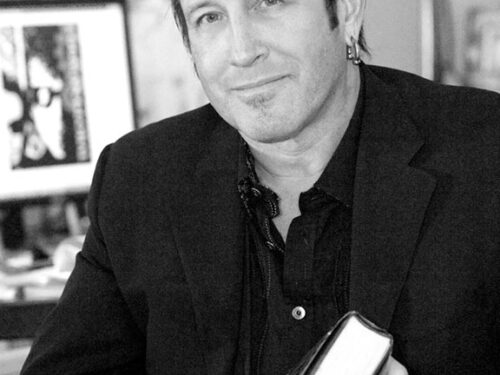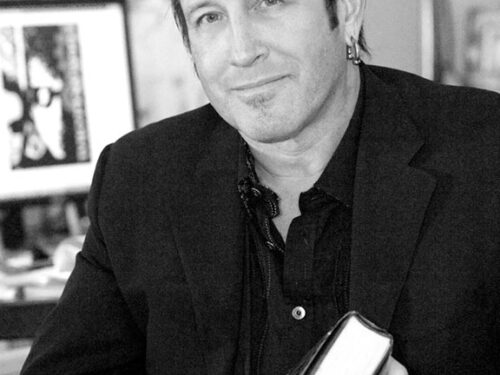

Not all readers are the same. Like every person is different, so too is every reader. Some are too busy to read much. Except on a long vacation or flight, they don’t have the time. Others have a little bit of time, but only so much. An occasional evening, a lazy Sunday, regular commuter flights. Then there’s the insatiable who can devour a whole opus like weightless caramel corn, reading between every crack in day or night until the last page is turned.
More to reality, we all go through phases; sometimes we read a little, sometimes we read a lot, sometimes we’re all over the place. And of course there’s the matter of times and places. These beget norms, and what people did 60 years ago following World War II, or even 25 years ago before the internet revolution, simply doesn’t translate to today’s world of multi-tasking, infinite choices, and throbbing impatience. The normalcy of today finds people reading shorter prose in less time with more distractions than ever before. Attention spans for books are shrinking, simple as that.
So why, if you have a story to tell, must you either write the full-blown novel or pen nothing at all? The brilliant news is that the dilemma is a false one, of the excluded middle. You don’t have to write the great American or British novel to tell your story. Not every book need be a Tolstoy War and Peace or tomb on the life of Michelangelo. Nathaniel Hawthorne, whose The Scarlet Letter earned him reverberating accolades as “the great American novel,” loved to write short stories. So too did John Steinbeck, whose The Grapes of Wrath won him the Pulitzer Prize; yet his novella, Of Mice and Men, is equally powerful and enviable.
You needn’t be Tolstoy or Hawthorne or Steinbeck to express your ideas, though you might well follow their lead. Instead of a novel, express your inspiration in a short story or novella or, God forbid, an essay! The inimitable Kurt Vonnegut was smitten with essays, writing many in his career, not the least of which is “Here Is a Lesson in Creative Writing.” Future writers of the world — download it today! Or follow the path of the inimitable Ralph Waldo Emerson, whose fame came from his essay, “Self-Reliant.” Or Nora Ephron, who between novels needed only “A Few Words About Breasts” to buoyantly make her point.
Like readers, authors also have busy lives, especially first-time writers or entrepreneurs or doctors or scientists or celebs or influencers who are itching to tell their stories but are busy in life doing something else; it is they who especially need a helping hand. For those among you, do not despair! Many options are truly available. Sandwiched between the novel and essay are short stories, novelettes and novellas. In all, five classic options exist in which to divine your creative tongue, and there are many professional writers out there, myself included, who live for the day an email arrives seeking our collaboration on something highly unique yet less than a full-tilt boogie novel.
But before you do that, give some thought to what you have to say and what your ideas might become. Below are parameters by length and other less tangible variables. Let them all flow through your leafy dendrites before you make the final call on how you would like your story told.
Essays, Epistles, Flash Fiction & More
If it’s under 1000 words, it’s an essay, though it might be an essay by a different color and gait. An essay typically unfurls a focused discussion of any topic, from concrete to abstract, that expresses the author’s personal viewpoint. Guys like Michel de Montaigne and Charles Lamb are cited in Wikipedia, but few will know them unless drilling into the footnote of an Ivy League lit text. Better known are E.B. White, with his “Once more to the lake,” Virginia Woolf and her “Death of the Mother,” or even Robert Ebert, the late great Chicago Tribune film critic, who penned “Go Gentle Into That Good Night.”
Also residing on the 1000-word-or-less medium are the more esoteric epistles or letters or missives, the latter reserved for the angry at heart. These are usually aimed at a group of specific people who share common credentials or beliefs, and often start with a pre-emptive warning, an “Open Letter to…” I remember reading Roy Childs, Jr.’s “Objectivism and the State, an Open Letter to Ayn Rand,” in which he parsed no words for the provocative Ms. Rand with her man qua mans and A is As. Or there’s “Reflections on Writing,” by Henry Miller, taken from his book of essays, The Wisdom of the Heart. Another must read.
As a mostly modern incantation, nor should we forget so-called “flash fiction” pieces that might also be described as “very short stories” or humorously as “short short stories” (humorously because brevity shuns repetition) or postcard fiction or micro-fiction…or whatever name fits around a narrow-waisted tale that might be told around a campfire or tea or brewski in few words, but yet still contains the essential features of a little book.
And then there’s the literary legend himself, the late great Ernest Hemingway, who told the shortest story ever, maybe at Harry’s Bar in Venice, California. Lore has it he collected $100 after betting $10 per person to ten enraptured friends that he could draw tears from his short story of merely six words: “For Sale: Baby shoes, never worn.”
Whoever would have guessed you have so many choices to choose from to launch your story into orbit around the literary sphere.
The Short Story
The classic short story runs between 3500 and 7500 words. Assuming there are 325 words on a typical paperback book page, that’s 11 to 23 pages. On a single MS Word page using size 12 Times New Roman font and spacing at 1.1, this translates to between six and 13 pages fully typed. That’s the length because, traditionally, the short story was intended to be consumed at a single sitting nurtured by a coffee, tea, or nip. For this reason, it is common for short stories to run in commercial magazines and get bound into anthologies with their brethren and sisters.
Because of the shortness of the format, a short story usually revolves around a single character, a discreet event, or an isolated happening – with a simple and direct story arch, often a moral or lesson. There may be a surprise twist at the end, but short stories rarely have time for big twists, conflicts, multiple characters, or diced up sub-plotting. That said, the narrative approaches vary widely, from first person to third person and present to past tense. Every great story finds its own unique voice, I firmly believe, and the short story wears this jacket tightly.
John Updike’s Pygmalion is recognized as one of the greatest modern short stories, and it is well worth the short but absolutely enthralling ride on which you’ll be taken. Every word, every sentence, every paragraph speaks to you. And unlike most short stories, each paragraph comes with a new little twist that, when combined, untether you from your assumptions in a seemingly simple emotional story of a subject who falls in love with his statute…or is it the other way around…or something else?
Or you may prefer Updike’s Separated, a story inspired by his own life with this slicing sentence epitomizing the rest (when his son asks why): “Why. It was a whistle of wind in a crack, a knife thrust, a window open on emptiness…Richard had forgotten why.”
A Novelette
Picking up where the short story leaves off is the Novelette (the ette being the clue, as it’s the English suffix denoting something “relatively small”). It is all relative, of course, but the precise measurements of the Novelette’s girth are between 7500 words for the trim and 17,000 words for the ample. By standard calculation, the top end of a Novelette thus weighs in at over 50 paperback pages, which might exceed the time and patience of the less inspired or busy multi-tasker.
In times of yore, the novelette was just the right size for the sizzling affair or romantic interlude or flowering sense of sentimentality – none of which would have sufficient time to bloom in the gestation period of the short story. It is always narrative fiction, to be sure, which the essay need not be. Herman Melville, known far and deep for his captivating tale of Moby Dick, the story of the great white whale, also wrote Bartleby, The Scrivener: A Story of Wall, which is a novella.
And as school kids, many of us digested George Orwell’s Animal Farm, about children drawn to cannibalism…and so much more.
The Novella
Shoulder-level to the novel is the novella. If the essay is infancy, the short story adolescence, and the novelette the teen years, then the novella is young adulthood. Between 17,000 and 40,000 words (52 to 123 paperback book pages), the novella first sprouted from the soil of the early Renaissance (the 1300s or thereabouts), not gaining wings, however, until the 18th and 19th centuries. For those who like to keep it simple and less erudite, the novella might be called a long short story or a short novel.
Once upon a time in America the novella was more fervently embraced by traditional publishers than today. Masterpiece cult fodder like Anthony Burgess’ dystopian black comedy, A Clockwork Orange, made famous in film by Stanley Kubrick, and Kafka’s Kafkaesque The Metamorphosis, both found publishers and ardent fans in an earlier era. Yet it is averred by mainstream lit agents today that novellas can’t be set up with traditional publishers. And while that may be so, if James Patterson and Michelle Obama were to put out a novella-thriller, The First Lady Is Missing, I guarantee you every publisher in the world would be pitching them six-figure offers.
But more to our own reality, I don’t care what the mainstream agents are saying or pitching. Many indie publishers that also bring energetic social media marketing to bear on their publications are anxious for the next great novella. These publishers are far more attuned to the newly emerging mindset of today in which less is more. Busy people juggling mobiles, tablets, laptops, desktops, kids, and unrelenting new tech – Christ, just keeping track of passwords is mind-blowing – rarely have time for full-on novels…but a novella? That’s a rose of a different bloom.
The Novel
A novel is the Full Monty of books. I don’t mean the wacky Sheffielders desperate to make a pound by stripping naked before an audience turned to hilarity, but a book of 40,000 words minimum and usually much, much more. Budding writers were once told that thrillers needed to be 100,000 words more or less, but today 70,000 words, especially for the unknown author, is preferred. For those who think better in pages, 100,000 words translates into the standard 300-page fare found at airport book shops. Patterson, Grisham, Harris, Dexter – these guys write longer and shorter, but 300 pages is always in their crosshairs to start.
True, the great novel is the sine qua non of literary prowess. It’s what bestows the title “man of letters” (deriving from the French, belletrist), and warrants inclusion into the literati. In the days of yore, it meant the writer frequented the salons, pubs and seasides at which profound thoughts emerged in enlightened minds, sometimes fishing with buddies. A short novel, The Old Man and the Sea exuded from Hemingway’s pores on the shores of Cuba as his last major work before his suicide. Les Miserables, considered by some the greatest novel ever written, took Victor Hugo 20 years from conception to conclusion, and was ultimately published while he was in exile from France, his home country.
But yours need not set its sights nearly so high. Today novels and novel-length non-fictions like memoirs or how-tos serve many purposes other than including the author in a class of individuals breathing rarefied air. I’ve co-written a novel for the purpose of advancing a Master’s Degree; co-written a memoir to aid in the attainment of a new career unrelated (for the most part) to the enormous achievements chronicled in the book; jointly written a legal thriller inspired by a true story; ghostwritten a drama based on a real-life infidelity with a billionaire; and collaborated on an inspirational book of a man whose life led him (sadly) to psychiatric commitment.
A novel or non-fiction book today has an infinite number of functions, from telling stories like those listed above, to documenting a legacy or offering a sequel or telling stories inspired from high or low or somewhere in between. In the end, as my grandmother Lucille was so fond of saying in her simple Kentucky way: “to each his own.” A book today can truly be of any size, shape or form. Genres once held sacrosanctly are commonly bent and merged today. Indeed, the world is your oyster, or if you dislike slimy goo in shells, your organic pear.






